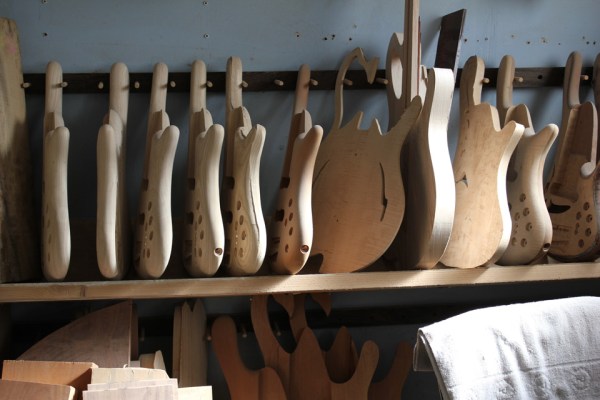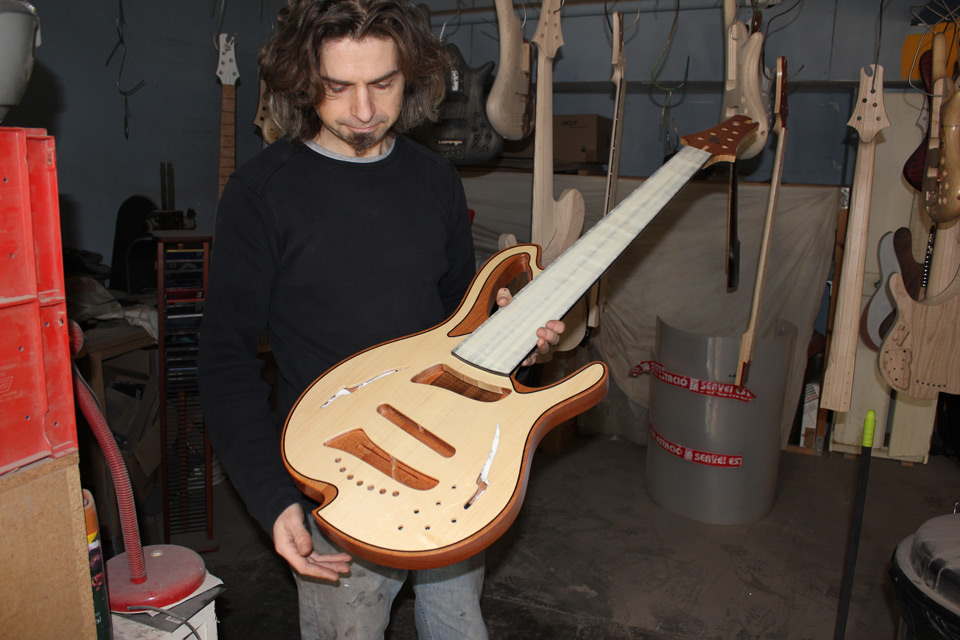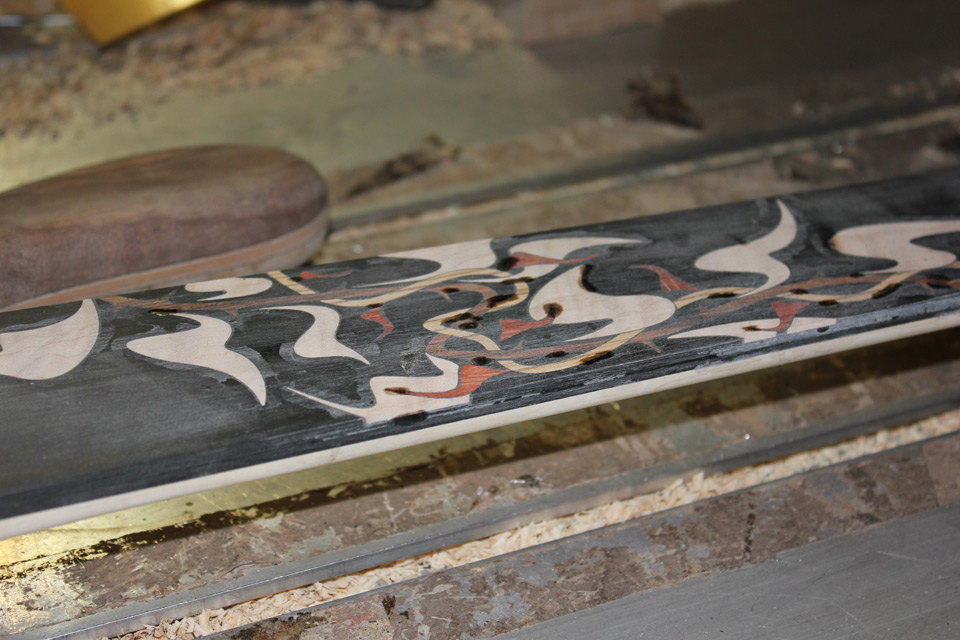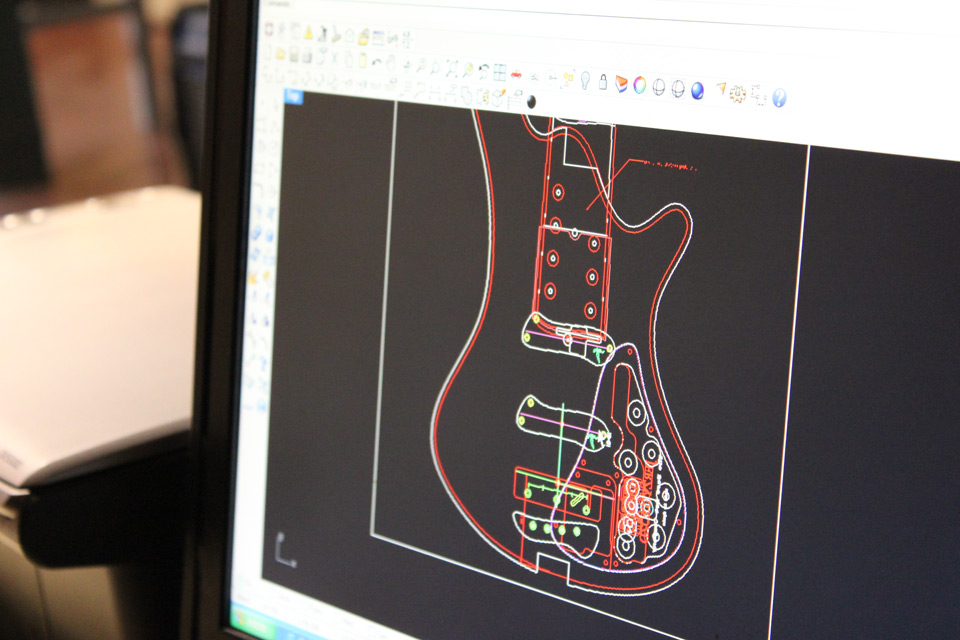Yours truly won’t be attending the Mobile World Congress this year, but I found a story I wrote last year about a little excursion I took on the last day of the Barcelona-based mega trade show in 2012. So I guess this is not really about the GSMA trade show itself, but rather is about Barcelona, the city. However, the story reminded me of the hopefully obvious truth that technology can work hand in hand with designers and artists and that the marriage of an artistic approach and technical delivery, can make all the difference in product design and creation.
Up a steep hill, far away from the hustle and bustle of the Plaça d’Espanya in Barcelona is a small Luthier shop called Jerzy Drozd Basses.
I had heard of the bass guitar maker before and really appreciated his complex, unique designs and aesthetics, but hadn’t really paid attention to where his shop was located.
Last year in February of 2012, as my travels to Barcelona approached for the Mobile World Congress, I realized that Jerzy Drozd was actually based in Barcelona. What luck and what a shame it would be to travel 8000 round-trip miles and not see the shop of this most interesting Luthier.
The Hike
With the news cycle dead by the last day of the Mobile World Congress, I ditched the Fira early that Thursday and headed up the hill to the north part of Barcelona.
Hill is possibly somewhat of an understatement. In fact, the walk up to the Horta-Guinardó district was steep enough to have an “incline track car” that I unwisely dismissed as unnecessary.
30 minutes later, I arrived at Jerzy’s studio, drenched in sweat, out of breath and late to my appointment, yet exhilarated to have seen a beautiful view of what seemed like the “real” city of Barcelona to me.
After a few moments, Jerzy emerged from the depths of the studio and easily forgave my tardiness stating that “everyone is always late” finding the studio in the remote streets at the top of Montressa. We started a tour of his fantastic wood shop/studio.
The New Approach
I had seen Jerzy’s basses before in magazines, and their marvelous, organic shapes are easy to remember. This guy makes bold, innovative and daring concepts come to life (check out the 12 string model he once created — that’s 12 string bass, not guitar.
Obvious comparisons to the architecture of Antoni Gaudi come to mind when looking at the undulating organic shapes of his basses. I asked about this however Jerzy told me that if that if there is a relation between his bass designs and modernism of Gaudi’s colossal influence on Barcelona, it is unintentional. He just follows his gut when designing.
To look at the finished products, you would think that these bass guitars are built completely by hand – soup to nuts – however I was shocked and impressed to find out that Jerzy is as much a technologist as a craftsman.
While Jerzy used to build all his basses completely by hand, he has been able to evolve his methods using technology in a way that allows him to keep the same aesthetic and quality, but cut down on the time he spends on the less intricate portions of the labor in making a bass. This actually allows him to focus more effort and time on the craftsmanship parts like inlays and custom bodies and detail work.
I want to emphasize here that he is using technology as part of his art and not replacing it. It is a modern approach to craftsmanship and he has been able to increase his throughput, while still maintaining an independent shop he runs by himself.
Design and Wood Shop
Jerzy uses software by Rhinoceros and MecSoft (VisualMill) to design the initial bodies of most of his bass guitars these days and has his cutting machines in the lower area of his studio networked directly to his computer workstation.
His basic designs are mechanically hewn from the wood and then he works the gorgeous details and inlays (of which there are many) by hand. With this approach he is better able to meet increased demand for his basses.
The Sound
There was no way I was getting out of his shop without playing one of his basses. His Obsession 4-string model was in the foyer of his studio and I played it. Jerzy ran the camera while I showed off a bit.
The video doesn’t accurately communicate all of the tonal qualities of the bass, but trust me, the lows were rich and the highs cut through easily. Light and sturdy, the bass was a dream to play and the extra detail Jerzy puts into his bass guitars is noticeable in the feel of this instrument. It has a unique, comfortable, feel.
So What Am I Really Saying Here
It’s not unique that Luthiers use mechanized, computer aided tools these days, even at a small scale or in independent shops. It’s the contemporary way to produce. But for some reason, it is surprising to me that Jerzy’s basses are started this way — these just aren’t your every-day instruments. What I mean is that they just don’t look like this could come from a machine. And I guess they don’t really come from a machine. They come from Jerzy’s mind. The palette of his tools is just a modern way of working and evidence of his ability to innovate and adapt while hanging on to his vision — the mark of a great craftsman.




